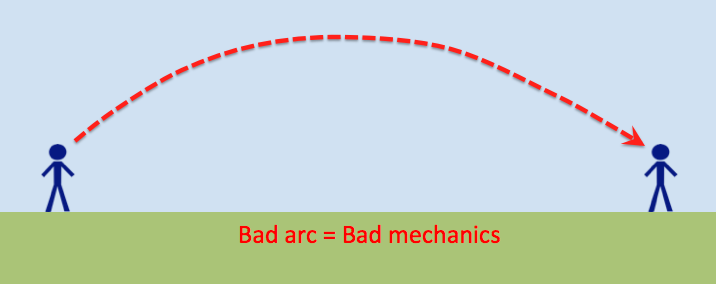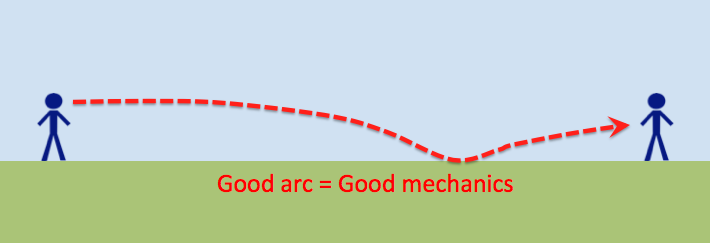The one hop throw to second base
August 28, 2013 by Coach McCreary
Filed under Catching
One of the biggest challenges for young players is transitioning to larger fields. Many of the mistakes that players can get away with on small fields just don’t fly on big fields. There are so many examples of this. Today’s post is one regarding catchers.
When kids start to play on the larger fields, runners usually can start stealing bases. The throw to second base therefore becomes more important for catchers. Unfortunately, many arms are just not strong enough yet to make great throws to second base. As a result, many throws look like this …
As you can see, in order to get the ball to second base in the air, a high arc is applied to the ball. Unfortunately, in order to create this arc, a catcher must use throwing mechanics that will not serve him well in the future. He’ll need to lean back and release the ball upward. Not the combination a catcher wants in his muscle memory. What a catcher should try to develop is a shorter, quicker, and downward release that will eventually create a strong, line drive throw to the bag. That is why completing a one hop throw to second like the following picture has a number of advantages.
First, it teaches proper throwing mechanics. Second and third, it ends up resulting in a quicker release and a stronger throw.
The trick is practicing where the hop should land. In order to give a good, easy hop for the fielder to catch, the throw should bounce about half-way between the mound and second base. Too close to the mound and multiple hops will occur which will slow the ball down too much. A hop that lands too close to second base will create a difficult hop for the infielder to handle making it more likely the ball will end up in the outfield.
The best way to practice this is to find out where the hop needs to be depending on the arm strength of the catcher. Once you find out where that spot is, put a cone or some other marker on that spot. The catcher then tries to hit that cone every time they throw. You can even measure the distance so that a player can practice hitting that spot away from a field as well. Just walk off the distance and it can be practiced anywhere.
Unfortunately, the biggest obstacle in making the one-hop throw to second is the young man’s ego. Young catchers would rather stick a fork in their eye than to show an apparent weak arm on a throw to second. In their minds, a throw that doesn’t reach in the air is a sign of weakness. However, if you explain the “why’s” of the throw and how it ultimately will make them a better catcher, you may be able to calm their egos enough to give it a shot.
Tomorrow’s post: Should you swing 3-0?







Leave a Reply